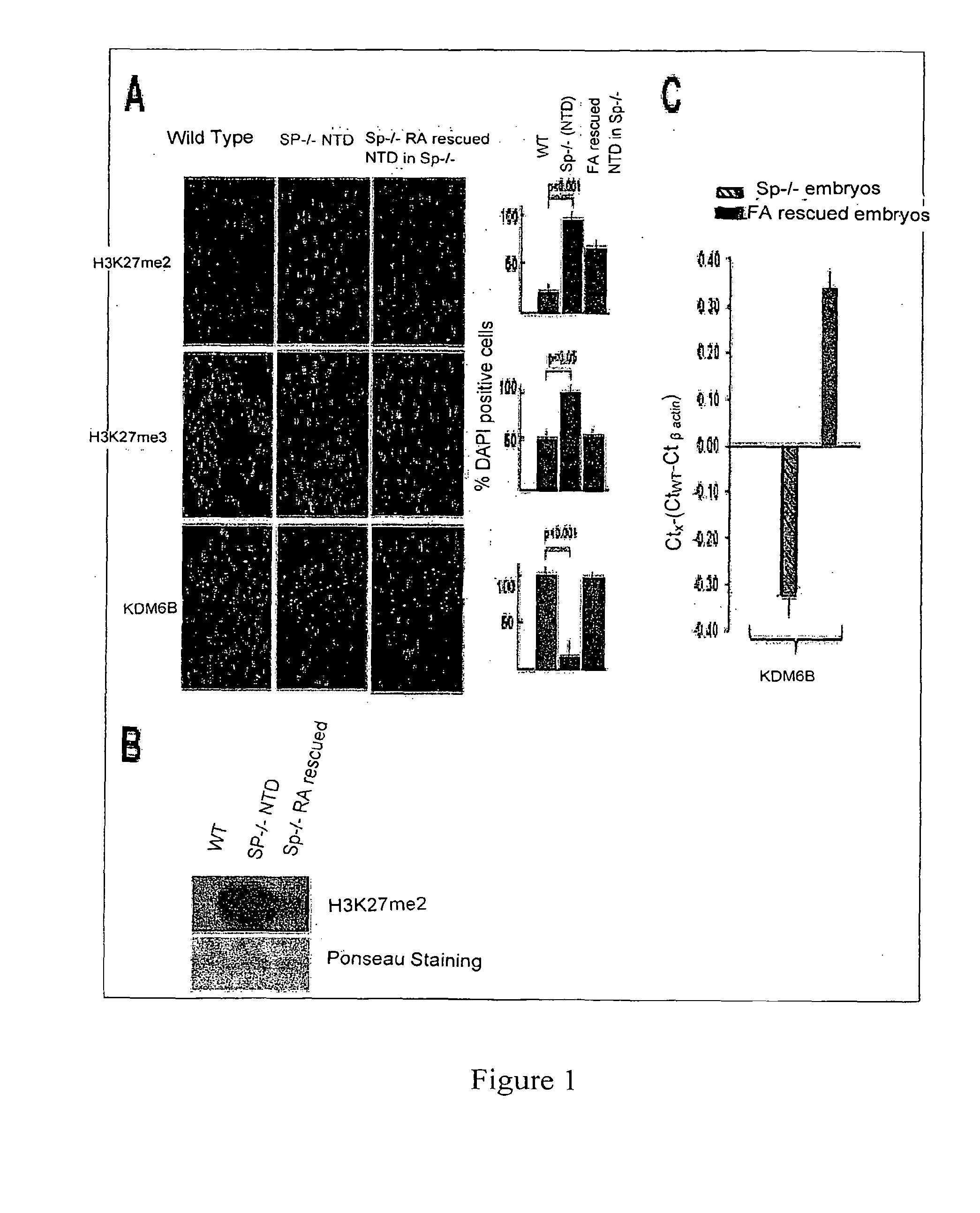Method of Detecting and Profiling Progression of the Risk of Neurodegenerative Diseases
a risk and neurodegenerative disease technology, applied in the field of detecting and profiling the progression of the risk of neurodegenerative diseases, can solve the problems of loss of bodily functions, memory loss, and difficulty in remembering recently learned facts
- Summary
- Abstract
- Description
- Claims
- Application Information
AI Technical Summary
Benefits of technology
Problems solved by technology
Method used
Image
Examples
example 1
Immunochemical Detection of H3K27 Methylation in Neural Stem Cells
[0039]A sample of cerebrospinal fluid is obtained from a subject using lumbar puncture. The cells in the sample are separated and washed three times with Phosphate buffered saline, pH 7.5 (PBS). The cells are coated onto a glass slide and fixed by incubation for 10 minutes in 4% paraformaldehyde (PFA) in PBS. The cells are then again washed three times in PBS.
[0040]A blocking solution (5% Normal Donkey Serum / 0.01% Triton X-100 / 0.01% sodium azide in PBS) is added for at least one hour. The blocking solution is removed and primary rabbit antibodies to H3K27 methylated (Abeam, Inc Cambridge, Mass. 02139-1517) diluted as per the manufacturer's instructions in the blocking solution is added. The cells are incubated overnight with antibody solution at 4° C. The antibody solution is removed and the cells washed three times in PBS. A solution of donkey-anti-rabbit secondary antibodies conjugated with horseradish peroxidase an...
example 2
Immunochemical Detection of H3K27 Methylation in Undifferentiated Neural Stem Cells
[0041]Cells are isolated from the cerebrospinal fluid of a subject as in Example 1. The isolated cells are contacted with a first monoclonal antibody raised against a CD133, Sox2, Oct4 or Nanog stem cell marker. The first monoclonal antibody is labeled with a first fluorescent probe having a first frequency emission range. The isolated cells are also contacted with at a second monoclonal antibody raised against a Brn3a, TuJ1, GFAP or O4 differentiation marker. The second monoclonal antibody is labeled with a second fluorescent probe having a second emission frequency range that is detectable in the presence of the first fluorescent probe. In addition, the cells are contacted with an antibody raised against H3K27 methylated labeled with a third fluorescent probe that is detectable in the presence of the first and second fluorescent probes.
[0042]Undifferentiated stem cells are identified as those cells ...
example 3
Early Detection Test for Risk of Alzheimer's Disease
[0043]A sample of cerebrospinal fluid is obtained from a subject and the cells contained in the sample washed and fixed using the protocol described in Example 1. The cells may also be incubated in Formic acid / pH 1.6-2.0 at room temperature for 10-20 minutes to improve antigen retrieval.
[0044]A mouse monoclonal antibody to human beta amyloid protein is added for 60 minutes at room temperature. (Clone: 6F / 3D, Mouse Anti-Human, Novocastra Labs, Catalog Number: NCL-B-Amyloid.) The antibody is diluted 1:100 using IHC-Tek™ Antibody Diluent (Cat#1W-1000 or 1W-1001) to reduce background and nonspecific staining. A separate serum blocking step using Normal Donkey Serum is not needed. Endogenous peroxidase activity is then blocked by incubating the cells 0.3% H2O2.
[0045]After blocking, the cells are incubated in biotinylated secondary antibody in PBS for 30 minutes at room temperature. After washing away unbound antibody, the presence of th...
PUM
 Login to View More
Login to View More Abstract
Description
Claims
Application Information
 Login to View More
Login to View More - R&D
- Intellectual Property
- Life Sciences
- Materials
- Tech Scout
- Unparalleled Data Quality
- Higher Quality Content
- 60% Fewer Hallucinations
Browse by: Latest US Patents, China's latest patents, Technical Efficacy Thesaurus, Application Domain, Technology Topic, Popular Technical Reports.
© 2025 PatSnap. All rights reserved.Legal|Privacy policy|Modern Slavery Act Transparency Statement|Sitemap|About US| Contact US: help@patsnap.com

